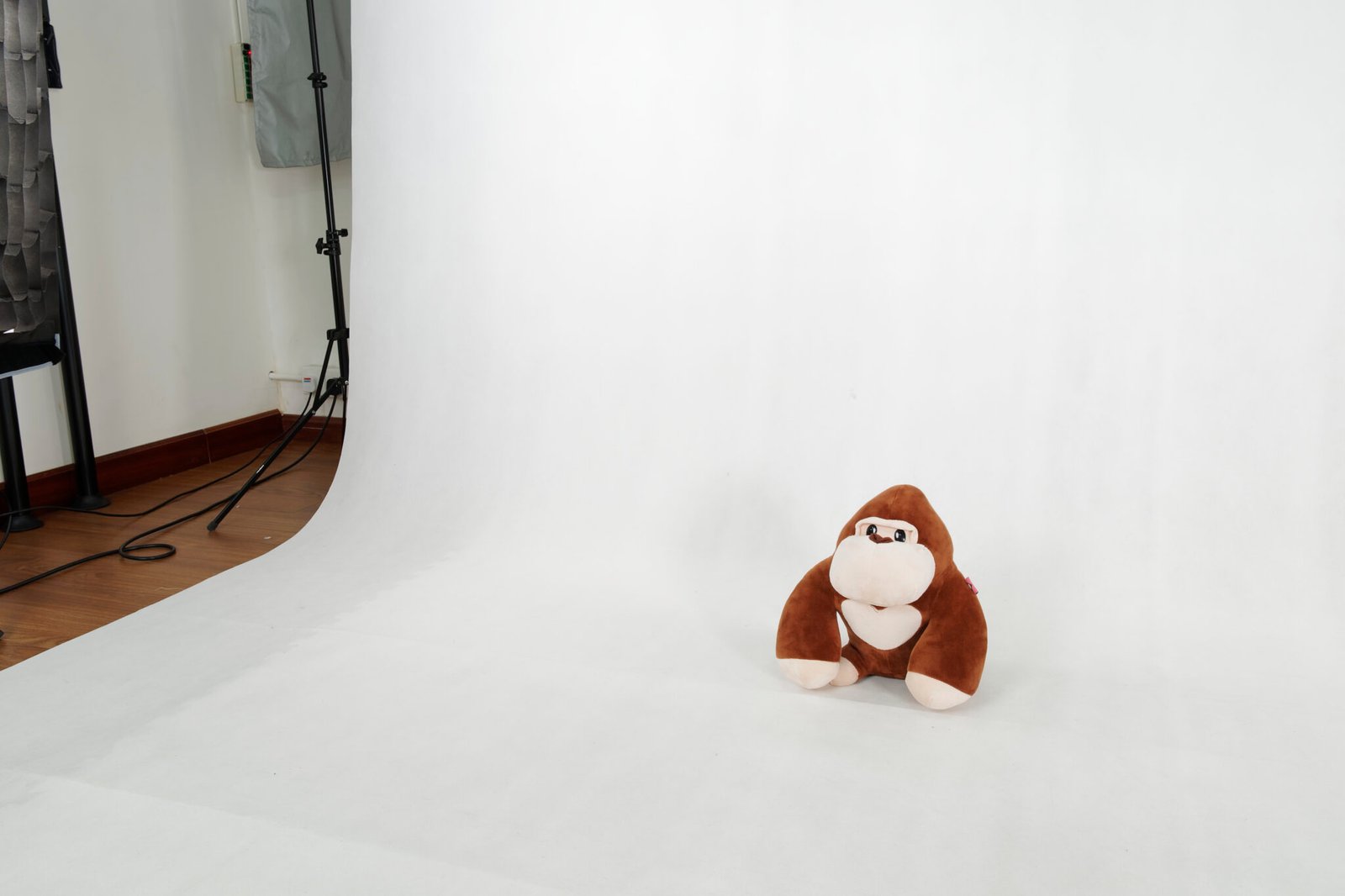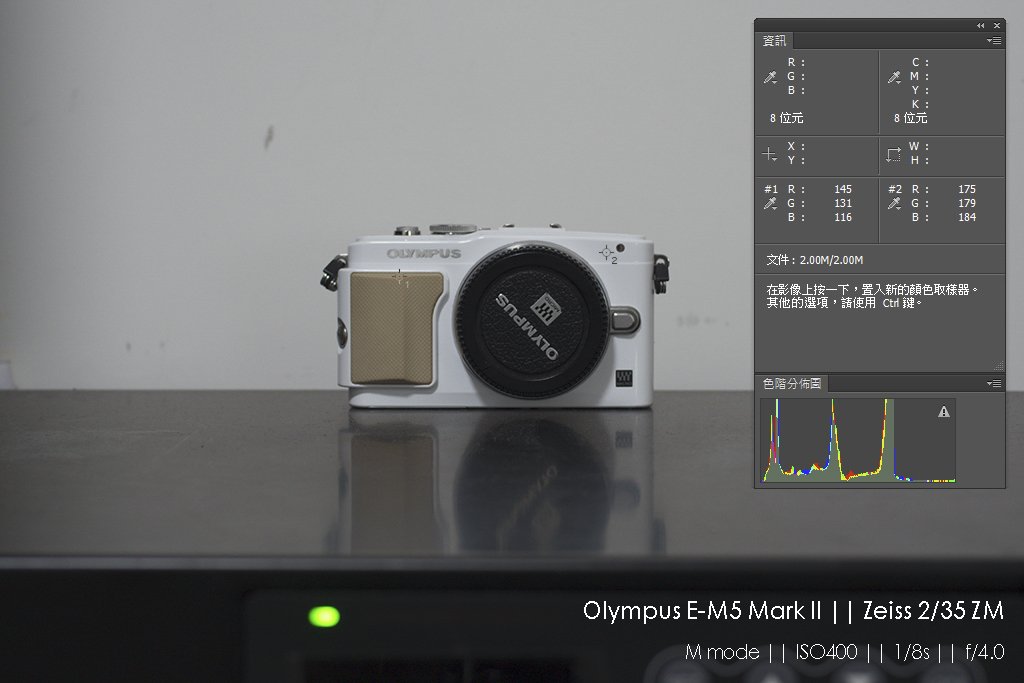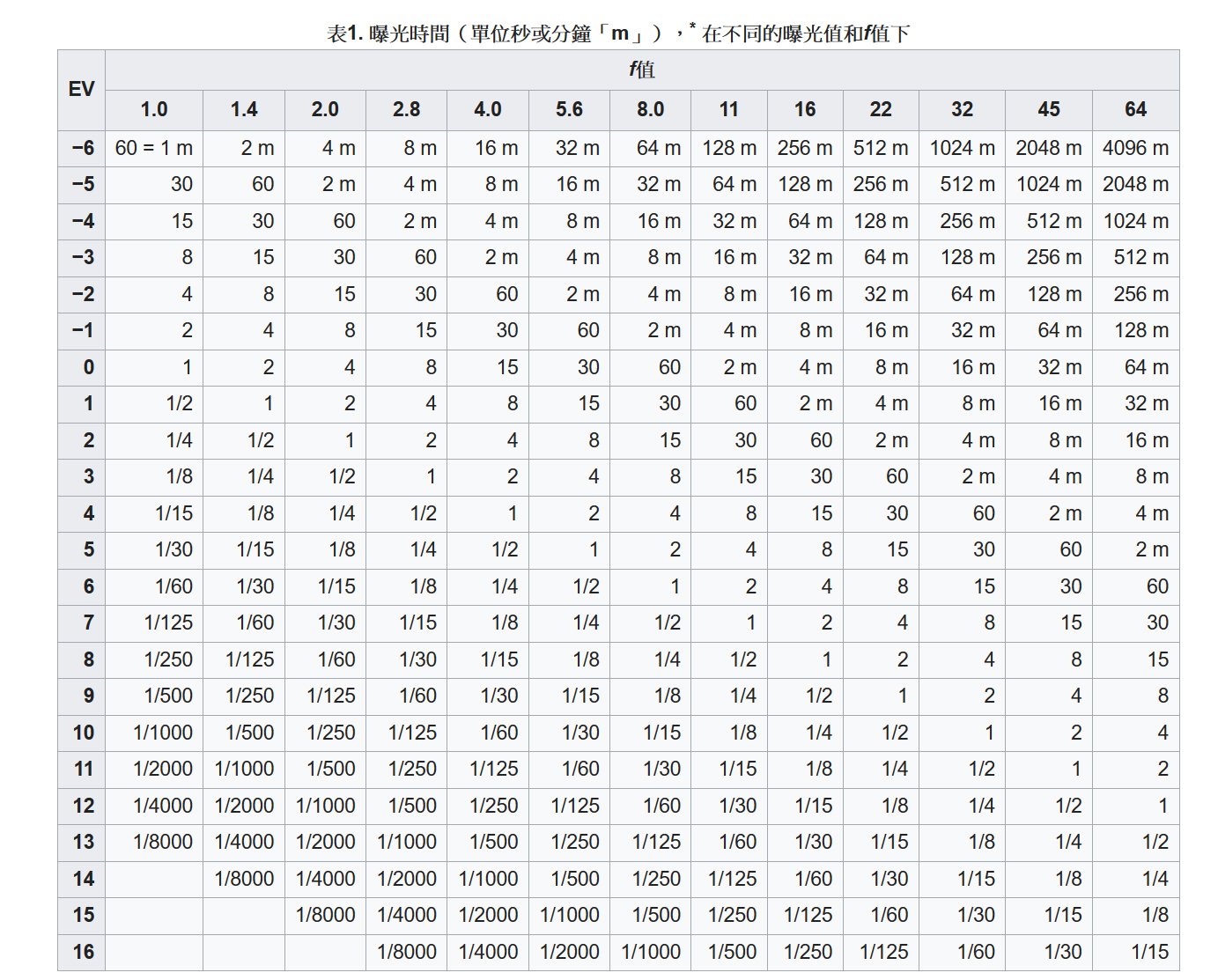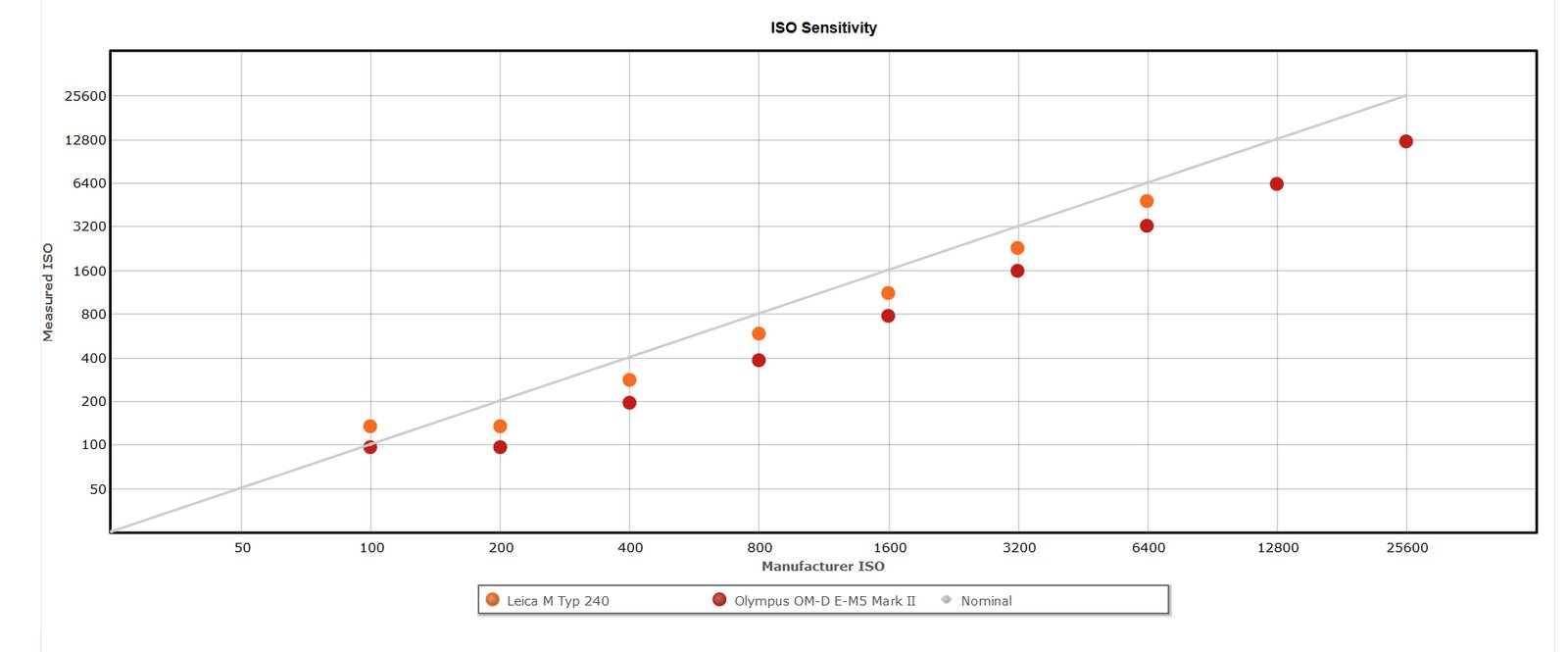Once I went to a studio for attending a pre-wedding photographing event. I was interested in the studio lighting operation. The photographer told me his exposure settings and let me had a try. He shot with a 35mm format DSLR and I used 4/3 format camera E-M1. As a result, we found that we obtained the same result while we used identical exposure settings.

I often see someone stated that because of crop factors, the shutter speed of smaller format systems will be slower, or the ISO sensitivity will be higher with the same aperture settings. I would like to share a comparison I have done before.
I owned Leica M-P typ240 (35mm format) and Olympus E-M5 Mark II (4/3 format) before. The comparison perfectly proved is that true. Both cameras used the same lens, in the same indoor lighting environment, while using M mode to manually set the aperture (f/4.0), shutter (1/8s), sensitivity (ISO400), and white balance, meaning that the automatic metering of the camera was not involved at all. After taking the picture, I used PhotoShop to output the images without any adjustment, and the “Color Sampler Tool” was used to check the RGB values at the same locations of the two images. The overall histogram and the screenshot are being displayed as following.


The results reported by the “Color Sampler Tool” show that the RGB values of the sampling points of the two cameras are similar, and from the histogram, the general shape looks similar, too.
Exposure value is not related to the sensor format
The two images were shot in the same environment using the same settings and so we now know that WE GET THE SAME RESULTS NO MATTER THE FORMATS WE USED.
Someone may misunderstand: while the 4/3 format has a crop factor of 2 to the 35mm format, the focal length will be multiplied by 2. They used the formula: f-number = focal length/aperture diameter and got the result that the aperture has been multiplied by 2, too. However they ignored the fact: for example, a 50mm lens will always be a 50mm, no matter what the situation is. The focal length will not be changed suddenly while it is used in different formats. These are physical properties. Imagine the images were projected on the focal plane and we placed sensors of different sizes on the plane. A smaller format just captured less area of the images on the focal plane, while the brightness of the images was unchanged. We can say “a 50mm lens used on 4/3 format will have a similar angle of view to that of a 100mm on 35mm format”. So how about the aperture? An f/2.0 is an f/2.0. It will provide the same brightness. The difference is shown in the depth of field. As a result, a 50mm f/2.0 lens on 4/3 format will give the same angle of view and same brightness to a 100mm f/2.0 lens on 35mm format, while the depth of field is equivalent to 100mm f/4.0 on 35mm format.

The explanation of Exposure Value from Wikipedia:
In photography, exposure value (EV) is a number that represents a combination of a camera’s shutter speed and f-number, such that all combinations that yield the same exposure have the same EV (for any fixed scene luminance).
https://en.wikipedia.org/wiki/Exposure_value
“Exposure value” indicates combinations of camera settings rather than the luminous exposure (aka photometric exposure).
https://en.wikipedia.org/wiki/Exposure_value
That is, the EV value is a standard used by any system, and the chart shown above shows what combination of shutter and aperture should be used at a certain EV value at ISO 100 sensitivity. This can be roughly interpreted to mean that there is no difference between larger and smaller formats, while we used the same f/4.0 lens.
“Sunny 16 rules” are widely used in the film era. If you understand the rules you understand better: there is no variable about the film format.
Someone confused exposure value and how much light the camera system has to gather. Larger formats indeed have to obtain more light to fulfill the volume however it’s just because they have a larger area. The illumiance of each point on the sensor doesn’t change.
“ISO” is a standard
ISO refers to the International Organization for Standardization (ISO), which provides a worldwide standard for any industy. The standard that regulates the sensitivity of digital cameras is ISO12232, which was updated once in 2019.
This document specifies the method for assigning and reporting ISO speed ratings, ISO speed latitude ratings, standard output sensitivity values, and recommended exposure index values, for digital still cameras. It is applicable to both monochrome and colour digital still cameras.
https://www.iso.org/standard/73758.html
The term ISO is widely used as a synonym for sensitivity by the camera manufacturing industry (while another term “ASA” in the film era is used less nowadays). This is a professional standard so I decided not to talk about quoted in this article. Simply, the sensitivity settings of any camera have to follow the standard.
Furthermore, someone said that camera manufacturers provided “fake ISO”. Most of them are talking about the data from DxOMark.

Take a look at DxOMark’s data, the smaller format E-M5II does appear to be lower than what it should be. DxOMark has an article in the past which explained the issues but it was no longer available after DxOMark updated their website. In short, the article doesn’t think it’s cheating, but it could be called a “trick” (Original from DxOMark: Not cheating-okay. A trick? Maybe.) It stated that sensors have differents capabilities of sensitivity. To match the ISO12232 standard, the manufacturers “push” the brightness of the final images to the level they should be, as evidenced by the comparison at the beginning. It is not reasonable to criticize that they cheated with using lower actual ISO to obtain a better signal-to-noise ratio – after “pushing” the images the noise will increase again. If they cheated, it is useless to image qualities.
I have not yet seen any article with stronger evidence to prove “ISO cheating”. I prefer to trust what DxOMark claimed and looking forward to more discussions to further support or against that.
The last words
Whenever I present the comparison I showed at the beginning of the article. Someone will question that different brands have their metering algorithm and it will affect the results. I felt discouraged about that … I said I did everything in M mode and set it manually. How did a non-existent behavior (metering) affect the results?
We are all become lazy because of automatic photography.
Leave a Reply